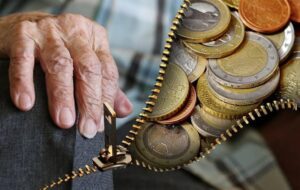
We are a company socially committed with the future of the country
En Futurus, nos dedicamos a asegurar tu futuro financiero. Con nuestra amplia experiencia en asesoría de pensiones y seguros, diseñamos estrategias personalizadas para minimizar las brechas y garantizar la estabilidad en tu jubilación. Desde el inicio de tu carrera hasta tu retiro, te ofrecemos una orientación experta que te brinda tranquilidad financiera en cada etapa de tu vida.
Además, simplificamos el proceso de construir patrimonio, facilitando la inversión inmobiliaria y permitiéndote diversificar tu cartera a nivel global. Desde la adquisición de propiedades hasta la generación de ingresos pasivos, nuestro equipo te acompaña en cada paso del camino hacia la realización de tus objetivos financieros.
Invierte en propiedades de Estados Unidos a partir de USD 1.000
¡Te ahorramos tiempo y recursos en tareas legales y administrativas!
- Decidir donde invertir y el monto
- Escoger el tipo de propiedad
- Crear LLC para la compra de propiedades
- Buscar un agente intermediario en el área
- Visitar las propiedades seleccionadas
- Evaluar reportes y fotografías enviados por el agente
- Preparar ofertas y contratos de compra
- Mandar negociación a través del agente
- Realizar inspección técnica en la propiedad
- Revisar reporte de la inspección y negociar el precio
- Proceder a la compra del inmueble
- Buscar un equipo para hacer renovaciones
- Buscar un administrador para la propiedad
- Encontrar inquilinos y firmar nuevo arrendamiento
- Manejar las reparaciones necesarias
- Manejar la contabilidad de la propiedad y de la LLC
- Pagar impuestos de la propiedad cada año
- Pago de impuestos anuales de la LLC

Nosotros simplificamos todo el proceso y te brindamos una ruta clara hacia tus objetivos financieros

Selecciona la propiedad
Nuestras propiedades son cuidadosamente seleccionadas y presentadas a inversores con inquilinos aprobados, listas para el mercado.
Elige el monto de tu inversión
Los inversores poseen un porcentaje de la propiedad según su inversión, sin cargos adicionales: cada dólar invertido equivale a un dólar invertido.
Genera ganancias
Los retornos mensuales se distribuyen según la participación del inversor. Después de 4 años o un rendimiento superior al 20%, compartimos los retornos y las ganancias de la venta.
Nuestra cartera de inversiones cuenta con más de 33,15 millones de dolares

Chicago
152
Propiedades bajo administración
USD 1k
Rentas mensuales promedio
193
Unidades totales
81%
Tasa de ocupación
USD 121k
Propiedades bajo administración
8.65%
Rentas mensuales promedio

Detroit
89
Propiedades bajo administración
USD 903
Rentas mensuales promedio
93
Unidades totales
77%
Tasa de ocupación
USD 77k
Propiedades bajo administración
9.6%
Rentas mensuales promedio

Filadelfia
4
Propiedades bajo administración
USD 1.585
Rentas mensuales promedio
4
Unidades totales
100%
Tasa de ocupación
USD 200k
Propiedades bajo administración
6.47%
Rentas mensuales promedio

Miami
7
Propiedades bajo administración
USD 2.257
Rentas mensuales promedio
4
Unidades totales
100%
Tasa de ocupación
USD 407k
Propiedades bajo administración
2.79%
Rentas mensuales promedio
FAQ's
The General Pension System in Colombia is made up of two mutually exclusive and competing solidarity schemes. The Individual Savings with Solidarity Scheme (RAIS) or Private Scheme and the Average Premium with Defined Benefit Solidarity Scheme (RPM) or Colpensiones.
Each one has specific rules on pension eligibility, which are decisive for access to a pension. The worker's choice of scheme is free, voluntary and flexible. In most cases, it is the companies' hiring departments that induce workers to choose the fund of their choice. They induce workers to choose the fund of their choice, without any real advice.
The schemes allow transfers between them under certain clearly defined conditions.
This uniqueness of the Colombian system generates a valuable option for members, as it allows them to make corrections on past decisions. Even among the same private funds, transfers can be made by changing from one administrator to another with the intention of improving service and capital saved.
These transfer options are an excellent alternative when choosing the pension scheme that suits you best.
Between 2019 and 2020, nearly 180,000 members from the entire General Pension System were transferred from the RAIS Private Funds to the RPM Colpensiones.
Under the assumption of rationality and with excesses of optimism, Colombians make their decisions based on a double obligatory pension advice given by the two regimes, in search of the best pension alternative.
For members, the application of this option is voluntary and does not guarantee improved retirement prospects for all.
Each scheme offers benefits that, if well applied in our working life and future, can lead to a very optimistic outlook for our old age. Depending on our contributions, our job prospects and our beneficiaries.
It is worth remembering that we are also protected against disability and death by being members of compulsory pensions.
The member benefits from the transfer option if, by exercising it, he/she switches to the scheme with the best offer of future pension benefits for his/her particular case.
The worst enemy of the Colombian pension system is unemployment, informal employment and the low awareness and importance of the subject.
Depending on the country situation and scheme rules, 95% of pension contributors in Colombia are better off opting for a pension in a private fund.
We live in a world where everything happens in real time, immediately, right now. That is why the idea of the future has become diluted, as if it will never come, and we do not tend to think that after today there will be many days and years, with which new responsibilities (for example, the education of children) and aspirations (such as buying a house, travelling or taking a break from work, a sabbatical period) will come to us.
And if we are young, much less do we think that one day we will no longer have the same strength and desire to work because time will have passed and we will be old. Pensioning, for young people, is something so far away that it seems surreal, a future that does not exist and, therefore, is not considered.
However, time goes fast and the more time passes, the more difficult it will be to raise money for your new obligations, fulfil your wishes or retire. So in real time, now, you need to start planning and building your future.
Fortunately, you can resort to various savings plans, including one that is very innovative because it can be linked to your pension contributions and has tax benefits. This is an insurance that covers your life and your voluntary retirement, in which each month you contribute an amount of money (premium) to complete a specific amount in a specific period of time, after which you will be reimbursed with interest.
In other words, with this insurance you set yourself a savings goal, which you make in monthly instalments for a certain number of years, and while you are saving you also earn interest and have your life covered; when you complete the goal and the term, you receive your money with interest. Thus, it allows you to build up a planned long-term reserve (between 10 and 25 years), which you can draw on before you retire, to invest it in a defined objective from the start.
In addition, if you die before completing the term you set out to save, your chosen beneficiaries will receive the total of your savings goal; if you become permanently and totally disabled, you receive the money; or if you retire and have met your goal, you also enjoy a refund during your lifetime.
With so many advantages of this insurance, it's well worth starting to think about your future today. What are you waiting for?
Nobody's life is bought, goes a popular saying, and when one member of a family dies, the impact on the others is immeasurable. Not only on an emotional level, but also financially if that person was dependent on others, such as children, parents, partners.
That is why, if your loved ones depend on you financially, it is so important that you have something certain to leave them. If you are filthy rich and you keep your fortune, you can rest assured that they will have everything when you are gone. But if you are not, you should at least have life insurance and be contributing to a pension. So if you don't have one or the other, now is the time to get them.
By law, contributions to the pension funds of a person who dies protect his or her loved ones, provided that the deceased has contributed for at least 50 weeks during the last three years of his or her life. These family members are beneficiaries and can receive a survivor's pension, every month, as follows:
- For life: spouse (permanent partner, over 30 years of age or who had children with the deceased) or parents (if the person did not have a spouse).
- Temporary: minor children, children up to the age of 25 if they are studying, disabled children of full age. If the deceased had no eligible children, spouse or parents, the temporary pension may be awarded to an invalid sibling for as long as the invalidity condition persists.
In contrast, when a person takes out a life insurance policy, he or she is free to choose his or her beneficiaries, there are no restrictions on age, relationship, or disability; all he or she has to do is provide full and accurate names and identification numbers, and determine a percentage for each. Thus, upon death, the beneficiaries receive the money as the person decided.
Another popular saying is that it is better to be safe than sorry, but when you die you are no longer able to be sorry for anything, so the best thing you can do now, while you are alive, is to ensure that the people you adore and depend on you can get on with their lives, without any major setbacks other than the pain of your absence.
In Colombia there are two pension systems that make up the General Pension System, as follows:
- Régimen de Reparto o de Prima Media (RPM), administered by Colpensiones.
- Individual Savings with Solidarity Scheme (RAIS) managed by: Colfondos, Old Mutual, Porvenir and Protección.
One of the great benefits of private pension funds is that they the money can be passed on to other persons who are not on the list of beneficiaries of the Law..
Both in private pension funds and in Colpensiones, when a member dies, the family members provided for by law (partner of more than 5 years of cohabitation, children under 25 years of age, siblings or children with disabilities or economically dependent parents) can obtain a survivor's pension. This is only if the insured person contributed for at least 50 weeks during the 3 years preceding his death.
In pension funds, if the member does not have any of the following beneficiaries from the list above, you have the option of inheriting your pension to relatives up to the fifth degree of consanguinity. That is, cousins, aunts, uncles, nephews, nieces and nephews, among others.
The same applies if the deceased is not a member but a pensioner, the balance accumulated in his Pension Savings Account can be given to the heirs up to the fifth degree of consanguinity.
On the other hand, in Colpensiones, if the member or pensioner does not have legal beneficiaries, the money re-enters the pension system and cannot be inherited.
This depends on several factors: your current age, the age at which you want to stop working and the amount of money you contribute each month to the pension fund as an employee or self-employed person.
In Colombia, regardless of the type of pension fund to which they are affiliated, people can retire at a certain age: 57 for women and 62 for men. The only public fund in the country, Colpensiones, also requires 1,300 weeks of contributions. But in the private funds, such as Porvenir and Old Mutual, the weeks contributed are not considered, only the money that each person has saved.
A private fund operates on the basis of the individually funded system, in which everyone contributes to their own pension in a personal savings account, where the mandatory contributions established by law and the voluntary contributions that the member wishes to make go.
Moreover, in a private fund, individuals decide how to capitalise their savings so that they grow. That is why private pension funds offer their members to invest in portfolios of varying returns, depending on the risk. This means that in a private fund it is you who determines the pension you will receive, as it is up to you to decide how much you save each month and how you will invest it.
You can also choose which private fund you want to be in, as they are not all the same. When selecting one, you should look closely at how solid it is (for example, time in the market, economic group to which it belongs), how responsible it is in managing the investment portfolios (for this purpose there are entities that rate the funds and whose information is public) and how much profitability it has given and currently gives (this data is provided by the Financial Superintendency and the funds themselves).
A public pension fund operates on a solidarity basis, meaning that active workers contribute a portion of their income to support those who have already retired because of their age, with the promise that when they reach old age and retire, there will be others who will continue to contribute for them.
Usually, in order to maintain this scheme, public pension funds are backed by the state and make low-risk investments with very moderate returns. Here there is no possibility for members to decide how to capitalise their savings. However, the amount of the pension is pre-established, so they know how much they will receive.
An additional difference between the public and private pension fund is what happens to the contributions when the member dies. In both types of funds, if the member had a spouse, children (minors, disabled or students up to the age of 25) or dependent parents, their contributions will be converted into a survivor's pension and they will receive it. On the other hand, if the deceased did not have such beneficiaries, the public fund does not return the money contributed to anyone, which is the case with a private fund, where all contributions and their returns are inherited by family members up to the fifth degree of consanguinity.
Choosing a pension fund is a very serious matter because after retirement you may live for many years and you will need to have enough money. Can you imagine how much it will be worth to support yourself for 15, 20 or more years? You will need a huge capital and for that you will have to have a well-managed savings and investment plan.
If you don't know, you'll want to find out about this:
- The amount of money a pensioner receives each month is called the mesada pensional.
- When the pension is in a private pension fund, the pension allowance is calculated on the basis of the money that the person has in his/her individual account at the time of claiming the pension (what he/she contributed during his/her working life plus the returns he/she earned), i.e. all his/her savings in the fund.
- A fund's performance is the percentage of returns it earns from making investments. The higher the percentage, the more money you have earned because you have invested better.
- Pension fund performance drastically influences members' returns because if it is low, they get lower returns, and as it increases, the returns to members are higher.
- In short: the more money in your individual account, the higher the amount of your pension allowance, and you will have a large individual account if your pension fund has a higher return.
The Individual Savings with Solidarity Scheme, known as RAIS or Private Scheme, is an old-age savings system, created in 1994. It is managed by private funds (Colfondos, Skandia, Porvenir and Protección), according to the savings made by the contributor. This scheme has very different requirements and characteristics from the Average Premium Scheme or Public Scheme.
The Private Pension System transformed workers' thinking, making them owners of their capital savings and giving them the freedom to choose the best option.
Members' contributions earn a return
Since the creation of the Multifunds in 2011, there has been a real historical return of 8%. These returns have allowed the savings of the workers affiliated to this system to amount to more than 237 trillion pesos, of which almost 61% of these pension savings represent the returns obtained by the management carried out by the Funds and the remaining 39% to the contributions made by workers and employers.
Members own their savings
The total of these resources are owned by the workers affiliated to the Individual Savings with Solidarity Scheme (RAIS). We can therefore assure that this system has generated wealth in favour of Colombian workers and has turned them into owners of capital, maximising the essential link between effort, savings and ownership.
Individual savings account holders
As a member, you have an individual savings account in your name, into which your pension contributions are deposited each month, as well as the income generated.
Minimum Pension Guarantee
It is considered a solidarity scheme, as it helps lower-income contributors, by means of a subsidy, to obtain a minimum wage pension by meeting minimum requirements. This is known as the Minimum Pension Guarantee.
Access to the Return of Balances
If you do not meet the requirements to obtain the pension (minimum capital or 1,150 weeks and pension age) you can access the Return of Balances that delivers the pension contributions, adjusted for inflation, adding the returns obtained over time.
In each of the existing schemes, a pension can be obtained in any of the following cases:
Old-age pension: payment received at the end of working life. In the Individual Solidarity Savings Scheme (RAIS), this pension is the result of the savings accumulated during the member's productive stage - contributions added to the returns generated - which are deposited in an individual account in the name of the member. This member can apply for his or her pension at any age, as long as he or she has sufficient capital to finance a pension equal to 110% of the current legal minimum wage.
Invalidity pension: is a financial benefit that guarantees a monthly payment in case of disability, i.e. when 50% or more of the working capacity is lost due to any cause other than an occupational disease. It is established on the basis of the average salary received during the last 10 years.
Survivors' pension: is the monthly payment that will cover the legal beneficiaries in the event that the member dies for reasons other than accidents at work or occupational diseases. For these cases, the Professional Risk Administrators offer coverage.
Depending on the type of pension, these are the statutory requirements you must meet:
Old Age Pension Requirements:
- The capital accumulated in the member's individual savings account must enable him/her to obtain a monthly pension of more than 110% of the legal minimum monthly wage.
- If you do not have sufficient capital, you can access the Minimum Old Age Pension Guarantee. To access this guarantee, the member must:
- Be 62 years old (men) and 57 years old (women).
- Have contributed for at least 1,150 weeks.
Disability Pension Requirements:
The general rules are:
- Loss of working capacity of 50% or more, caused by non-occupational illness or accident.
- 50 weeks of accumulated contributions during the last 3 years.
Requirements for Survivors' Pension:
For pensioners:
The pensioner is deceased.
For non-pensioned members:
- The member is deceased.
- 50 weeks of contributions in the last 3 years.
In addition, it should be borne in mind that, in order to access the survivors' pension, there must be prior compliance with the requirements that apply to the member or those persons who accredit their status as beneficiaries. This is the case of:
- Spouse or permanent partner: in accordance with the provisions of the law, the survivor's pension will be temporary for the spouse of the deceased, or for the permanent partner who proves uninterrupted cohabitation with the deceased member, who is under 30 years of age and has not procreated children with the deceased. For life, for the spouse of the deceased or permanent partner who proves uninterrupted cohabitation with the deceased member, over 30 years of age or under 30 years of age and who has procreated children. When the pensioner dies, the spouse must prove 5 years of uninterrupted cohabitation with the deceased.
- Children under 18 years of age or over 18 years of age up to 25 years of age who are economically dependent for reasons of study.
- In the absence of the above, the parents who were financially dependent on the deceased.
- In the absence of the above, disabled siblings who were dependent on the deceased due to their condition. The right to a survivors' pension is granted when, in addition to proving the quality of beneficiary, the deceased member has contributed 50 weeks during the last 3 years at the date of death, or is within the special rule.
Only in private pension funds you have the autonomy to choose between five ways to manage your pension:
RENTA VITALICIA:
- Allows the member to contract the administration of pension payments with an insurance company.
- It offers greater security since the amount of the pension is not affected by the longevity of the pensioner and/or beneficiaries. The pension is adjusted annually with the Consumer Price Index (CPI). In the event of the death of the pensioner or beneficiaries, the balance of the annuity does not constitute an estate.
PROGRAMMED WITHDRAWAL:
In this case, the pension fund administers the pension payments.
If there are no beneficiaries, the balance constitutes the estate.
VARIABLE ANNUITY WITH DEFERRED ANNUITY
In this mode, the member contracts with the insurer of his choice for a life annuity to be paid from a date after the time he retires, retaining in his individual pension savings account sufficient resources for the pension fund management company to pay him, from that account, a temporary annuity during the period between the time he retires and the date on which the life annuity begins to be paid by the insurer.
VARIABLE TEMPORARY INCOME WITH IMMEDIATE ANNUITY
In this case, the member contracts with the insurance company of his choice for the payment of an immediate life annuity from the date of retirement, retaining in the individual savings account sufficient resources for the pension fund management company to pay him, simultaneously with the immediate life annuity, a temporary annuity during the period agreed with the management company.
PROGRAMMED RETIREMENT WITHOUT NEGOTIATION OF THE PENSION BOND
In the case of Pension Vouchers, there is Programmed Withdrawal without Negotiation of the Voucher. In this case, the member retires early under the Programmed Withdrawal mode, without negotiating the pension bond to which he/she is entitled. However, the member can count on the pension bond for the calculation of his pension and redeem it at the time of its maturity, in this way the member will not lose money by having to negotiate the aforementioned bond beforehand.
The documents required for any claim shall be those that allow verification:
- The existence of the member, his or her identity and that of his or her beneficiaries.
- The occurrence of the event.
- The fulfilment of the particular requirements for access to the corresponding benefit.
In doing so, the law has defined a series of documents required to prove facts or acts of persons.
Regarding the verification of the existence and identification of the member and his beneficiaries:
- Church baptismal certificate, if born before June 15, 1938.
- Birth certificate, in original, if born after 15 June 1938.
- Photocopy of the applicant's identity card; where required, fingerprint.
Regarding the quality of the beneficiary, it is necessary to provide identification documents proving the family relationship with the insured or pensioner:
If spouse: Civil Registry of Marriage and the extrajudicial declaration made by a third party indicating the conditions of manner, time and place of cohabitation with the member or pensioner.
If she is a permanent partner: the extra-judicial statement made by a third party indicating the manner, time and place of cohabitation with the insured or pensioner:
If the child is a minor: the birth certificate proving that he/she is the child of the insured or pensioner.
If he/she is a child of full age: the birth certificate showing that he/she is the child of the insured or pensioner; certification of studies indicating the type of education; extrajudicial declaration made by third parties indicating economic dependence on the insured:
If they are the parents: Birth certificate of the member or pensioner showing that they are the parents of the pensioner. Extra-judicial statement made by a third party indicating economic dependence on the member or pensioner.
If they are invalid siblings: Civil registry of birth of the affiliate or pensioner and of the siblings in which the kinship is evidenced with the same opinion of the competent entity, where it is indicated that the loss of working capacity is 50% or more. The extra-judicial declaration made by third parties in which the economic dependence on the affiliate or pensioner is indicated.
This is one of the most frequently asked questions by pension fund members, and the answer is simple: the more capital invested and the better the decisions made, the higher the returns and the better the benefits.
You may be wondering how you can manage to invest more capital and make better decisions with your pension, given that you are legally obliged to make contributions to a fund that you do not even manage. Here is how it works:
- You can make a good or a bad decision when choosing your pension fund.
- You have the possibility to invest more capital in your pension, if you decide to make voluntary contributions and not just make compulsory contributions.
- If you join a private pension fund, you have the option of telling your fund how to capitalise your contributions by investing them in various portfolios, which offer higher or lower returns depending on the risk. Considering your age, you can make a good or a bad decision in choosing your portfolio.
If all of the above sounds too complicated for you, it is advisable to consult a suitable and reliable pension advisor, who can guide you on what is best for you and help you make the most beneficial decisions for you.
Blog

Considerar la Pensión Voluntaria en Colombia: Planificación para el Futuro
Como bien sabemos, en Colombia, el sistema de pensiones es un tema crucial que afecta directamente la calidad de vida de los ciudadanos en su jubilación.

Asuntos de nuevos pensionados en fondos privados ¿Qué está pasando en Colpensiones?
El sistema de pensiones colombiano tanto público como privado recientemente ha estado en el centro de atención; y esto debido a la reforma propuesta por el actual gobierno, donde se pretende que ambos sectores trabajen de la mano hasta consolidar un sistema mixto.

La cotización para las pensiones colombianas parecen inalcanzables: cifras relevantes
La cotización para las pensiones colombianas parecen inalcanzables: cifras relevantes El Sistema General de Pensiones en Colombia tiene como objetivo principal garantizar las contingencias derivadas
Get in touch with
Us
Please fill in the following details and an advisor will contact you as soon as possible.
Teléfono
(+57) 302 234 0413
Dirección
Carrera 47 # 128 A 30 (Piso 2)
info@futurusnetwork.com
Todos los derechos reservados | 2024 | Creado por SOMOS CONNECTION
